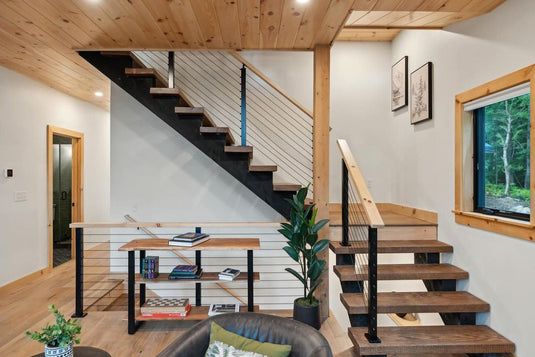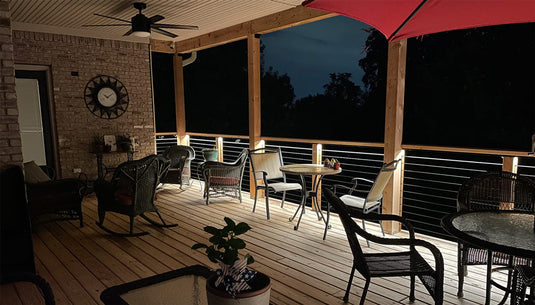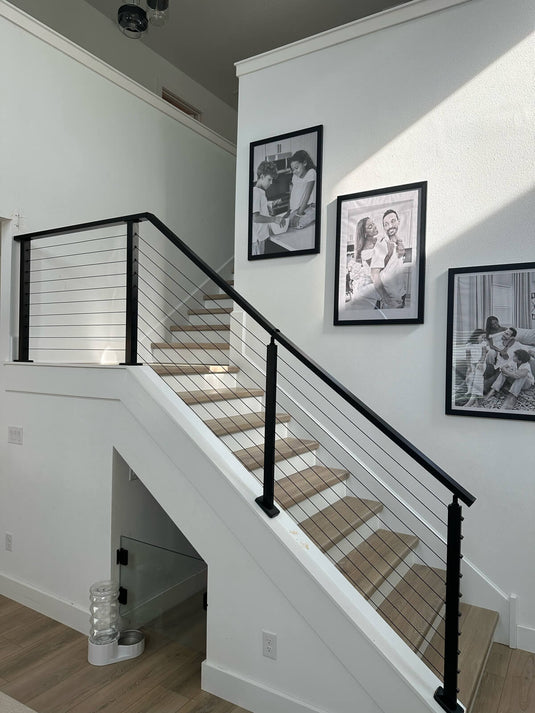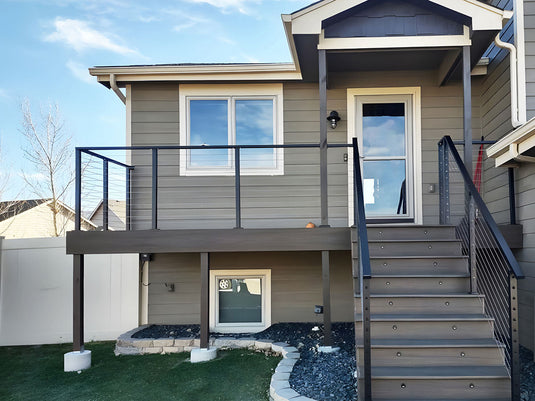TABLE OF CONTENTS
How Cable Railing Systems Shape Human Behavior in Public Spaces
When we think about cable railing systems, we often focus on their aesthetic appeal and safety features. However, these architectural elements significantly influence human psychology and behavior in public spaces. From immediate personal reactions to broader social impacts, understanding these effects helps create more effective public environments.

1. Immediate Individual Responses
Visual Perception
The transparent nature of cable railings creates "visual continuity," allowing people to maintain a constant connection with their surroundings. This openness reduces feelings of confinement and encourages exploration, particularly in spaces like art galleries where visual connection is crucial.
Safety Perception
While cable railings meet all safety standards, their minimal visual structure can initially trigger slight anxiety in some individuals. This response typically fades within minutes as people unconsciously recognize the system's stability, leading to more mindful movement around elevated areas.
2. Physical Behavior Patterns
Movement and Flow
Cable railings naturally guide traffic patterns in public spaces. Their open design creates:
- More efficient people flow
- Reduced congestion (up to 30% compared to solid barriers)
- Natural "rest zones" where people feel comfortable pausing
- More even distribution of people across available space
Physical Distance
People tend to maintain a greater distance from cable railings than solid barriers, suggesting an unconscious respect for the minimalist design. Children show less tendency to climb or play with these systems compared to traditional balustrades.

3. Spatial Awareness Effects
Environmental Psychology
Cable railings influence how people perceive and interact with their environment:
- Enhanced perception of space size
- Improved natural light distribution
- Greater connection between different levels
- Reduced claustrophobia in enclosed areas
Navigation and Orientation
The transparent nature of cable railings helps people:
- Maintain better spatial awareness.
- Navigate multi-level spaces more effectively.
- Understand building layout more intuitively.
- Feel more confident in unfamiliar environments.
4. Social Interaction Impact
The see-through design of cable railing systems fundamentally transforms how people interact in public spaces by promoting what sociologists call "passive social interaction." This phenomenon allows individuals to feel connected to others without requiring direct engagement. In spaces with cable railings, people tend to spend more time in common areas, perhaps because they feel more comfortable and less isolated. The open design naturally encourages spontaneous interactions between visitors, as people can easily spot friends or colleagues across different levels or areas.
When people can see others engaging in various activities, they feel more connected to the collective experience of the space. The transparency of cable railings also improves situational awareness, allowing people to better navigate crowded areas and maintain comfortable distances from others.
Communities already familiar with open architectural designs typically embrace these systems immediately, finding them natural and comfortable. However, in cultures where solid barriers are the traditional norm, there may be an initial period of adjustment as people become accustomed to the more transparent boundaries. These cultural preferences often influence the overall comfort level and usage patterns of spaces featuring cable railings.

5. Accessibility Benefits
Cable railing systems excel in providing universal design benefits that cater to diverse user groups with different needs. For visually impaired individuals, these systems offer consistent tactile feedback through their cables and posts, creating reliable guidance for navigation. The predictable structure of cable railings particularly benefits people using mobility aids, as they can confidently gauge distances and maintain steady support while moving through spaces.
People experiencing spatial anxiety often find comfort in cable railing systems due to their enhanced visibility. The ability to maintain visual connection with surroundings helps reduce feelings of disorientation or confinement that might occur with solid barriers. Elderly users particularly benefit from this design, as the clear sightlines and sturdy structure provide both physical support and psychological reassurance.
6. Practical Design Implications
Architectural Considerations
Understanding these psychological responses influences design decisions:
- Optimal cable spacing for perceived safety
- Strategic post placement for natural movement
- Integration with lighting systems
- Accommodation of different user groups
Future Applications
Modern design trends increasingly consider:
- Post-pandemic space requirements
- A balance between openness and privacy
- Adaptation to changing social needs
- Integration with smart building systems
Conclusion

The psychological impact of cable railing systems creates a complex web of influences that shape how people interact with public spaces. By understanding these effects, designers can create environments that not only look attractive and maintain safety but also support positive human behavior and interaction. As we continue to study these relationships, we can better design public spaces that serve both functional and psychological needs.




